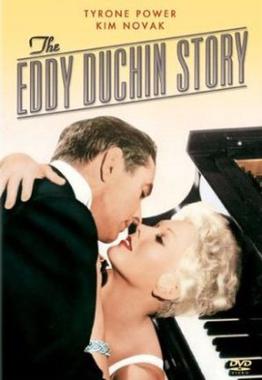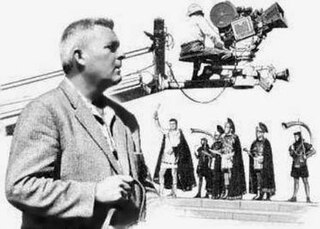Related Research Articles
Joseph M. Newman was an American film director most famous for his 1955 film This Island Earth. His credits include episodes of The Twilight Zone and The Alfred Hitchcock Hour.

Robert L. Surtees was an American cinematographer who won three Academy Awards for the films King Solomon's Mines, The Bad and the Beautiful and the 1959 version of Ben-Hur. Surtees worked at various studios, including Universal, UFA, Warner Brothers, and MGM, lighting for notable directors Howard Hawks, Mike Nichols, and William Wyler, gaining him a reputation as one of the most versatile cinematographers of his time.

William H. Daniels ASC was a film cinematographer who was best-known as Greta Garbo's personal lensman. Daniels served as the cinematographer on all but three of Garbo's films during her tenure at Metro-Goldwyn-Mayer, including Torrent (1926), The Mysterious Lady (1928), The Kiss (1929), Anna Christie (1930), Grand Hotel (1932), Queen Christina (1933), Anna Karenina (1935), Camille (1936) and Ninotchka (1939). Early in his career, Daniels worked regularly with director Erich von Stroheim, providing cinematography for such films as The Devil's Pass Key (1920) and Greed (1924). Daniels went on to win an Academy Award for Best Cinematography for his work on The Naked City (1948).

John Francis Seitz, A.S.C. was an American cinematographer and inventor.

Burnett Guffey, A.S.C. was an American cinematographer.

Lee Garmes, A.S.C. was an American cinematographer. During his career, he worked with directors Howard Hawks, Max Ophüls, Josef von Sternberg, Alfred Hitchcock, King Vidor, Nicholas Ray and Henry Hathaway, whom he had met as a young man when the two first came to Hollywood in the silent era. He also co-directed two films with legendary screenwriter Ben Hecht: Angels Over Broadway and Actor's and Sin.

The Eddy Duchin Story is a 1956 American biopic film of band leader and pianist Eddy Duchin starring Tyrone Power and Kim Novak. Filmed in CinemaScope, the Technicolor production was directed by George Sidney and written by Samuel A. Taylor. Harry Stradling received an Academy Award nomination for his cinematography. The picture received four nominations in total and was one of the highest-grossing films of 1956. Incorporating signature elements of Duchin's style into his own, Carmen Cavallaro performed the piano music for the film.
George Duning was an American musician and film composer. He was born in Richmond, Indiana, and educated in Cincinnati, Ohio, at the Cincinnati Conservatory of Music, where his mentor was Mario Castelnuovo-Tedesco.
Sound recordist Leslie I. Carey first hit Hollywood in 1938, where he embarked on the first of over 300 films. Some of these were A Double Life in 1947, The Naked City and Abbott and Costello Meet Frankenstein in 1948, Winchester '73 in 1950, Creature from the Black Lagoon and Magnificent Obsession in 1954, Man Without a Star and This Island Earth in 1955, The Incredible Shrinking Man (1957) and Operation Petticoat (1959). Also in the late 1950s, he worked extensively on the "Peter Gunn" TV series. Nominated six times for the Academy Awards, he won an Oscar in 1954 for The Glenn Miller Story.

Russell Metty, A.S.C. was an American cinematographer who won the Academy Award for Best Cinematography, Color, for the 1960 film Spartacus.
William Austin Lyon was an American film editor, from 1935 to 1971. He was born in Texas, and died in Los Angeles, California. Employed by Columbia Pictures for most of his career, he was nominated for the Academy Award for Best Film Editing six times, and won twice, for From Here to Eternity (1953) and Picnic (1955).
Paul Markwitz was a German production designer, art director and set decorator. He worked on over 50 films between 1935 and 1967. He was nominated for an Academy Award in the category Best Art Direction for the film Martin Luther.
Edward S. Haworth was an American production designer and art director. Active from 1950 to 1992, he was the production designer or art director on more than 50 feature films. He won an Academy Award for Best Art Direction for Sayonara (1957) and was nominated for the same award for five other films: Marty (1955), Some Like It Hot (1959), Pepe (1960), The Longest Day (1962), and What a Way to Go! (1964).
Carlton W. Faulkner was an American sound engineer. He won an Oscar in the category Sound Recording for the film The King and I. He was also nominated for four more Academy Awards, three in the same category and the fourth for Best Effects, Special Effects.
Ray Bomba was an American sound editor who was nominated during the 18th Academy Awards for the film A Thousand and One Nights in the category of Best Special Effects. His nomination was shared with Lawrence W. Butler.

The following is a list of works by science fiction and fantasy author Poul Anderson.
Gene Havlick was an American film editor.
This is an incomplete list of works by American space opera and science fiction author Frederik Pohl, including co-authored works.

Al Clark was a prolific American film editor whose career spanned four decades, most of which was spent at Columbia Pictures. He was nominated for 5 Academy Awards and 1 Emmy during his career. He is credited with editing over 120 films, and towards the end of his career, in the 1960s, he also edited several television series.
Francis X. Shaw was an American assistant director. He was nominated for an Academy Award in the category Best Assistant Director.
References
- ↑ "The 7th Academy Awards (1935) Nominees and Winners". oscars.org. Retrieved 2011-08-07.
- ↑ "The 19th Academy Awards (1947) Nominees and Winners". oscars.org. Retrieved 2011-08-19.
- ↑ "The 26th Academy Awards (1954) Nominees and Winners". oscars.org. Retrieved 2011-08-20.
- ↑ Selise Eiseman (March–April 2006). "Pushing the Envelope..." Editors Guild Magazine. 27 (2). Archived from the original on 2016-01-29. Retrieved 2009-06-13.